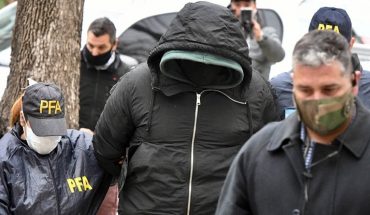Possession consists of possessing a weapon for self-defense or for other activities such as hunting. Typically, such a weapon cannot be removed from the home or a certain place.
On the other hand, the concept of carrying a weapon is often used to refer to the authorization that a person receives to Moving with a gun that you have acquired legally.
The carrying of arms by some citizens is constitutionally guaranteed – with many restrictions and conditions – in Guatemala, Haiti and Mexico, while in Honduras it was authorized in a law approved at the beginning of the century. On the island of Puerto Rico, which is an unincorporated territory of the United States, it is also legal to carry weapons.
But even in these places the sector is strictly regulated.
Although Mexicans have the constitutional right to own guns, there is only one store that sells them in the country, located in Mexico City; for its part in Haiti It is virtually impossible for a civilian to obtain a licence today because the licensing system collapsed a few years ago.
In Brazil, the government of former President Jair Bolsonaro relaxed in 2019 the requirements to carry and possess a weapon by individuals, which increased sales of firearms to the civilian population.
But earlier this year, President Luiz Inácio Lula da Silva signed a decree that initiated the process of restructuring the country’s gun control policy, forcing those who want to carry a gun to have a justification.
In Colombia, the government of Gustavo Petro banned the carrying of weapons in December of last year through a decree that has been extended until December 31 of this year.
Venezuela, one of the nations with the most homicides worldwide, banned the private sale of firearms (with a few exceptions) in 2012, stopped issuing new firearms licenses in 2013, and banned the carrying of firearms in public places in 2017.
In the rest of Latin America, the carrying of weapons is limited to security forces and bodies and citizens who allege reasons of self-defense and / or for sports activities or hunting, but must acquire a license that, in theory, is difficult to obtain.
Possession of weapons
In Argentina, Brazil, Chile, Costa Rica, Panama, Paraguay, Dominican Republic and Uruguay, civilian possession of weapons is permitted, but a license is required.
Other countries such as Bolivia, Colombia, Cuba and Peru also ask for a good justification for having a gun.
“Latin America is the region with a More restrictive gun policy worldwide, it is a sector with many limitations,” Carlos Pérez Ricart, a researcher at the Center for Economic Research and Teaching (CIDE), based in Mexico City, tells BBC Mundo.
“In general, Latin American countries have very limiting rules for the possession of weapons, because the region has followed a tradition of disarmament since the middle of the last century, as a result of several civil wars that occurred in the region,” adds the expert in security and organized crime and arms trafficking.
“The issue was internalized that weapons had to be monopolized by the army and the police.”
The origin of weapons in the region
However, such restrictions have not translated into fewer weapons circulating on the streets of Latin America.
According to the UN, 37% of homicides worldwide are concentrated in the Americas, with only 8% of the world’s population.
Although most Latin American countries maintain strict arms control measures, these efforts are undermined by the illicit flow of material arriving from abroad, especially from the United States.
According to figures from the US Department of Justice from 2017, the origin of at least a third of the firearms seized in Mexico, El Salvador, Honduras, Panama and Nicaragua He was American.
Several cases have highlighted how many weapons purchased in the United States end up in Latin America.
In May 2022, a Texas court sentenced Charles Anthony Lecara to more than 7 years in prison for leading a Texas-based arms trafficking ring.
In the United States, this network worked through people who bought “Popular firearms among the cartels” and claimed that the weapons were for personal use.
These weapons ended up in the hands of Lecara, who then sent them to cartels in Mexico.
In another case, in August 2020, Florida authorities arrested two Venezuelan nationals after finding an arsenal of firearms on a private plane that had declared St. Vincent and the Grenadines as its destination, but was actually headed to Venezuela.
Cycle of violence
Carlos Pérez Ricart, of CIDE, explains that initially the “culture of peace” fostered by Latin American governments in the mid-twentieth century, which sought to make people have no weapons, worked in some countries.
“But unfortunately during the Cold War and especially during the Central American civil wars, a large number of weapons were imported from Russia, China and the United States, which ended up being sold, once the wars were over, to organizations and guerrilla groups in Colombia, Peru and other Latin American countries.”
“From there, homicides in Latin America have become a constant that has made the region The most violent in the world“.
Eugenio Weigend of the University of Michigan warns that giving civilians access to firearms can also lead to a cycle of violence.
“Let’s assume that the citizen manages to stop the offender and shoot him. The violence may not stop there. The offender is part of society. He has family, friends and maybe he belongs to a gang that is possibly going to seek revenge,” he explains.
“Many times, none of this is taken into consideration in legislative discussions and this is dangerous.”
Violent cities
Pérez Ricart says that more guns in an urban context of drug trafficking fosters violence.
This is a theory he has backed up with the study.”More guns, more violence? Evidence of a complex relationship from Latin America“, published last year.
“The equation of ‘More guns equals more violence“It’s not valid in any context, but more guns in violent places like Latin American cities do lead to more violence.”
The CIDE expert insists that there is not a single case, in one context of “A lot of crime“ such as Latin American urban centers, where the increase in the number of guns has helped reduce violence.
A recent case that serves as an example outside the region is that of the United States, says Eugenio Weigend of the University of Michigan.
Across the U.S., gun sales skyrocketed during the COVID-19 pandemic. According to Small Arms Analytic, Americans purchased about 23 million firearms in 2020, a 65% increase over 2019.
During the same period, more than 19,400 homicides with firearms were registered, which represented an increase of 25%, according to data from the US organization Gun Violence Archive (GVA).
Pérez Ricart predicts that “most likely” in Ecuador the same thing happens.
“The evidence shows that the Ecuadorian government’s measure will lead to a significant increase in the number of homicides, suicides, accidents and overall deaths from firearms.”





![translated from Spanish: [VIDEO] Bebé falleció y padre biológico acusa a esposo de la madre que se enteró que no era suyo translated from Spanish: [VIDEO] Bebé falleció y padre biológico acusa a esposo de la madre que se enteró que no era suyo](https://ananoticias.com/wp-content/uploads/2019/03/translated-from-Spanish-VIDEO-Bebé-falleció-y-padre-biológico-acusa-370x215.jpg)